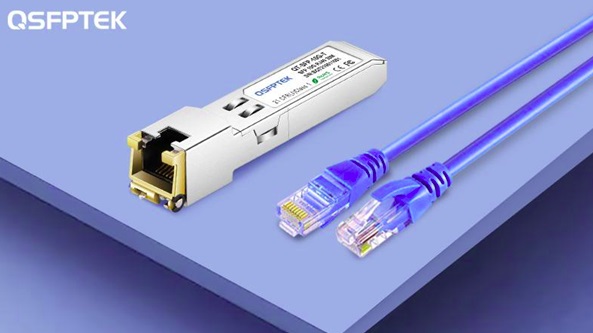Analysis of 10GBASE-T 10 Gigabit Copper Cable Cabling System
10 Gigabit Copper Cable System Introduction
The Category 5e cabling system has completed its historical mission and met mainstream applications for 5 to 10 years. Category 6 cabling system is being widely used at this stage, but for the Category 7 system, the author thinks that it does not have the conditions for the widespread promotion, regardless of project cost, construction difficulty, acceptance difficulty, interface compatibility, which all hinder the promotion of Category 7 cabling system. important factor. Therefore, the enhanced Category 6 cabling system was born.
We all know that the 10GBase-T transmission mode will utilize Pulse Amplitude Modulation (PAM) technology, which has been generally adopted by the 1000Base-T mode of Gigabit Ethernet. The 1000Base-T mode utilizes PAM technology and uses PAM-5 encoding to perform duplex bidirectional 250Mbps transmission on each of the 4 pairs of wires. This application requires an operating bandwidth of approximately 80MHz. 10GBase-T recommends encoding with PAM-5/PAM-10/PAM-16 and hybrid techniques for full-duplex 2.5Gbps transmission over each of the 4 pairs.
 Picture 1 of Analysis of 10GBASE-T 10 Gigabit Copper Cable Cabling System
Picture 1 of Analysis of 10GBASE-T 10 Gigabit Copper Cable Cabling System
According to the above requirements, according to Shannon's theorem calculation, in order to achieve a transmission rate of 2.5Gbps, the transmission capacity of the channel should reach 20Gbps (4 pairs of lines × 2.5bps per pair = 10Gbps, full-duplex mode means 10Gbps × 2 = 20Gbps).
In early model experiments, a 10 Gigabit shielding system was required to meet such requirements. Those who support the use of 10 Gigabit shielded wiring systems believe that the current investment in 10 Gigabit shielded wiring systems is not much higher than that of non-shielded systems, and it can transmit data more reliably and more securely. Guaranteed and can save a lot of time in testing.
Operating bandwidth of approximately 625MHz is required, which exceeds the frequency limits of standard Class E/Category 6 cabling systems. In the latest TIA standard, the Cat.6A standard supporting 10GBase-T is reduced from 625MHz to 500MHz.
Finally, the comprehensive cabling standard TIA/EIA 568B.2-10 released in 2007 defines a new cable class Cat.6A (enhanced Category 6) to meet the standard for 100m channel length 10 Gigabit twisted-pair copper cable transmission, Cat. The transmission bandwidth required for Category 6A twisted-pair copper cable is defined as 500MHz.
Cat6A 10 Gigabit Copper Cabling System
For the transmission of a 10G data network, cabling standards were prepared earlier and more fully than network standards. CAT 6A is a true 10 Gigabit copper cable. Although CAT 6 also supports 10GBase-T applications under limited conditions, considering the impact of short links, such a guaranteed and safe distance is 15 to 37 m. Although there was a saying of 55 m a long time ago, the on-site factors are complex. There are great limitations, so it is not recommended for users to use CAT 6 to carry 10 Gigabit applications.
For CAT 6A copper cable, if you want to understand the most basic, you need to emphasize the following four aspects, which are also the most basic characteristics of the standard definition.
(1) Ensure that the channel performance meets or exceeds the cabling standard and can support 500 MHz, which is usually referred to as the bandwidth. In comparison, Category 6 is 250 MHz. CAT 6A has double the bandwidth and 10 times the transmission capacity.
(2) The channel length can be up to 100 m and can support applications with 4 connections. The maximum length of a channel in Ethernet is 100 m, which is the end-to-end maximum distance of a channel, from 100 Mb/s, 1 000 Mb/s to 10 Gb/s, this is true for all Ethernet applications, which is determined by the transmission Delay, Ethernet technology, etc. Although the distance design principle cannot be changed, CAT 6A is more stable and reliable than CAT 6 transmission. At any time, any amount of data is transmitted, and any high-grade cable is more stable and reliable than low-grade cables, with stronger anti-interference ability and lower bit error rate.
(3) Can support standard 10GBase-T applications. This interface still uses RJ-45, which has excellent compatibility. So, CAT 6A is a good backward-compatible system. Comparatively speaking, both Class F (commonly known as Class 7) and Class Fa cannot support the RJ-45 interface, and the compatibility is not good. Considering the deficiencies in international standards, product production, acceptance testing, and related applications, Class F has not been the first choice for 10 Gigabit copper cables in the Chinese market.
(4) Excellent alien crosstalk and interference suppression performance, passed the alien crosstalk AXT test, which is the most important performance feature of enhanced Category 6. The most important feature that differentiates CAT 6A from CAT 6 is alien crosstalk. It takes the six-in-one scenario as the worst-case analysis object, and the tester simulates the scenario shown in Figure 2 to analyze the ability of the intermediate cable to resist alien crosstalk.
You should read it
- How will play Super Mario at 380,000 frames per second?
- 25 unexpected facts about orange sure you don't know
- What to do when Skype video doesn't work?
- Learn about Krita - Free alternative to GIMP
- How to view battery life on iOS 12
- Toshiba introduces a Core i3 touchscreen laptop
- New printing solution with Google Cloud Print
- Free antivirus software is better than the paid one
- 7 ways hackers steal your identity on social networks
- How to Optimize Windows Vista
- Old iPhone production is at risk of shortages because Foxconn and Wistron's factories in India are forced to close.
- The most beautiful historical Powerpoint wallpapers
May be interested

How to Manage Fonts in Windows

How to avoid accidentally cluttering the Windows Registry

How to reset TCP/IP on Windows 10 and Windows 11

Microsoft recommends users to uninstall Windows 11 update KB5012643

Instructions to customize the mouse pointer in Windows

How to transfer old device drivers to a new Windows PC






 How to create a Gigabit Ethernet cable with simple tools
How to create a Gigabit Ethernet cable with simple tools Installing Internet at home: Optical cable or copper cable?
Installing Internet at home: Optical cable or copper cable? Press cross cable for 1 Gigabit network card - EASY or DIFFICULT?
Press cross cable for 1 Gigabit network card - EASY or DIFFICULT? What is CAT 6 network cable and how is it different from the CAT 5e network cable?
What is CAT 6 network cable and how is it different from the CAT 5e network cable? Top 10 best network cable testers
Top 10 best network cable testers How to find and use Bronze in Minecraft
How to find and use Bronze in Minecraft